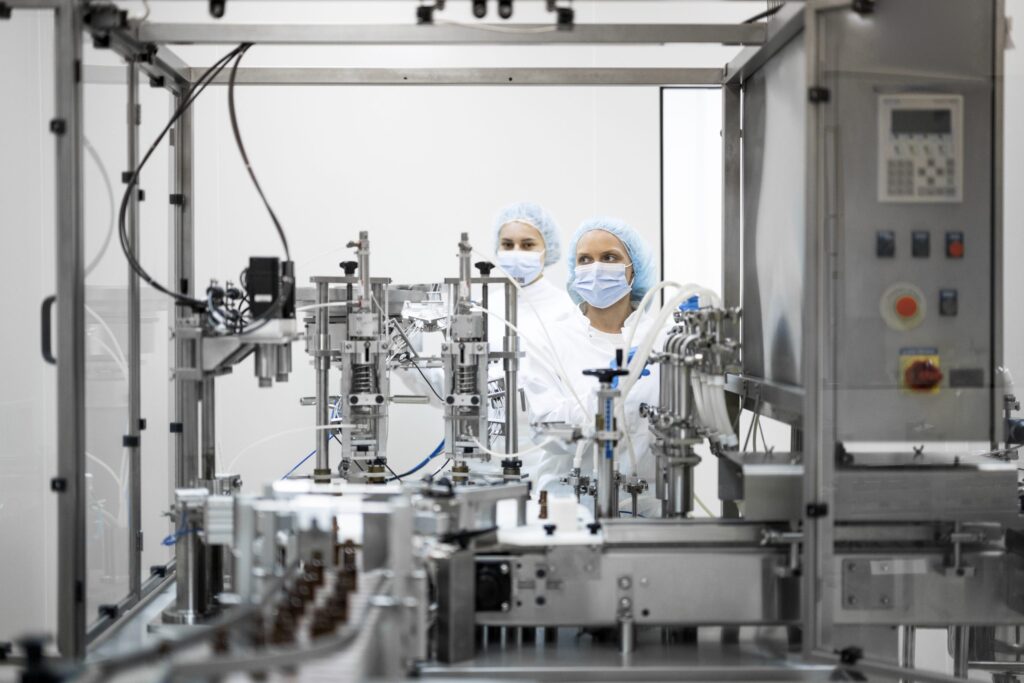Ahead of this year’s Interphex meeting in New York City, Jerry Keybl, Avantor’s senior vice president, biopharma products and strategy, sat down with GEN to discuss current trends in the biologics space, and helping biomanufacturers navigate the current political and economic climate in the United States.

Earlier this year, the company expanded the capacity of its European facility in Gliwice, Poland, for manufacturing, formulating, and filling United States purified water and water for injection-based hydration solutions. These are used in buffer preparation, cell culture media, clean-in-process, and formulation processes.
In November 2024, Avantor opened a 60,000-square-foot innovation center in Bridgewater, NJ, one of 13 centers globally that house labs for Avantor’s internal research and development activities as well as for its scientists to work on biomanufacturing projects directly with customers. The new center doubles Avantor’s previous laboratory and pilot plant capacity and includes spaces for upstream and downstream process development including dedicated analytical testing laboratories and a viral vector laboratory. It also includes clean rooms for piloting bioprocessing workflows for monoclonal antibodies, mRNAs, and AAVs that will ultimately be scaled up to run at larger manufacturing sites. Besides its innovation centers, Avantor has also established distribution centers and biosciences production businesses that provide lab services and handle manufacturing.
What follows is a version of the conversation with Keybl that has been edited for length and clarity.
GEN: Avantor will be at Interphex this year. Will you be making any big announcements at the meeting? What can attendees expect?
Keybl: There are three big things that we wanted to showcase through our products—scalability, flexibility, and efficiency—and how bioprocessing solutions can address each of those. Scalability is an interesting question in the industry. Therapeutic[s] need to be manufactured at different scales economically and so we’re keen on showcasing solutions for process development all the way through to very large campaigns. An example of the product[s] that we’ll be showcasing [are] our magnetic mixing systems. Last year we, launched a mini magnetic mixer that has the same user interface as our big equipment, [and] enables customers to do smaller processing and development more efficient[ly].
The second topic [is] flexibility and adaptability. I don’t think we’ve ever had so many modalities simultaneously being manufactured by our customers. Monoclonal antibodies have been the bread and butter and still are across the industry, but we [also] have peptide therapeutics, viral vector therapeutics, cell therapy. We are showcasing solutions there that are modular [for] adapting workflows [to] manufacture different therapeutics in the same space, [which is] particularly important for our CDMO customers. An example of that is simplifying buffer management through our direct dispense offering.
The last piece of this is around efficiency. We’re all aware of the macro environment that we’re facing right now and the importance of doing things efficiently. We take a pretty expansive look at processes and think about the types of innovations that we can bring and solutions that we can bring that are going to reduce the total cost of manufacturing for our customers.
GEN: What are some of the biggest growth areas for Avantor in 2025 and beyond? It sounds like cell and gene therapies might be one.
Keybl: We [already] talked a little bit about magnetic mixers. We are also bringing a tangential flow filtration system to showcase [at Interphex] that has had a tremendous interest from cell and gene therapy and viral vector manufacturers. We’re really focused on the systems business and offering modular and configurable offerings [that] help customers further optimize their process. That’s one really big area of growth for us.
The other one is around some of the reagents that we’ve put out. When we think about cell and gene therapy, one of the key steps in producing a viral vector is around cell lysis. We have a new reagent that we launched last year to support cell and gene therapy, [and] we have another reagent [for] monoclonal antibodies around viral inactivation … that is more ecologically friendly than alternatives.
GEN: Earlier, you mentioned some of the major biologics categories that the community is working on. What are some key trends in the space from your perspective?
Keybl: [What’s] always interesting to me [is] how the modalities are evolving. The answer in the future, would be the same as if you asked me a year ago, which is a basket of different types of modalities [that target] challenging diseases. We have seen a rise in antibody-drug conjugates over the last several years, … and there’s going to be new opportunities for tweaks and innovations [there]. Also, mRNA was the big hot topic a couple of years ago [and] before that there was a lot around cell therapy and CAR-T [therapies]. Cell therapy is maybe heating up again this year. [Also] viral vectors [will] continue to be an important modality even in the face of the recent sad news out of Sarepta. [Editor’s note: Sarepta Therapeutics said recently that a patient died following treatment with its gene therapy for Duchenne muscular dystrophy.]
GEN: Stepping back a bit for a broader perspective, as we look ahead, how can biologics developers and manufacturers navigate what is shaping up to be a challenging economic and political climate for biologics?
Keybl: It’s a question that’s probably on everyone’s minds these days. What’s clear in 2025 is that the optimal solution in the future might look a little bit different than it did last year. I don’t think the market’s moving in a fundamentally different direction than it was in 2024, I would say. But where people choose to invest geographically might have some changes. At the end of the day, the whole industry is focused on making sure that patients get the therapies they need and the number of patients that exist in the world isn’t impacted necessarily by this [climate]. There’s the same need out there for strong scientific solutions, which means also that the fundamental economic drivers are going to be pretty much the same.
One of the advantages of being a global supplier is that we have footprints in different regions so that we can meet customers where they are. We can make investments in different places to be where our customers are and leverage the global footprint that we have.
GEN: Let’s talk about artificial intelligence briefly. Can you speak to what Avantor’s plans are in terms of the technology?
Keybl: Probably just like every other company, we’ve been looking at that for some time and have our own internal tools that we are using. And we’re looking at ways that we can use AI to help customers make decisions. One of the pilots that [my team has] been working on is around helping customers ask questions that lead to the right product with the right attributes for their solutions.
GEN: Last November, Avantor opened a new innovation center in Bridgewater, NJ. Can you share an update on how things have been going there?
Keybl: I think our teams are much more productive. When you think about doubling the amount of space we have and [being] better able to run processes that are just like our customers, that going to really pay dividends for us over the course of the next several years.
GEN: Do you have any new products planned that you can discuss publicly at this time? Any plans to launch additional innovation centers in the future?
Keybl: We have a handful of products that we anticipate launching this year—nothing that we’re going to be speaking about yet. We continue to invest across our network. One of the things that we announced was a large hydration facility in Poland that provide[s] ready-to-use stock buffers. We made a very large investment there to serve customers in Europe, and we continue to do those things, in addition to launching products.


